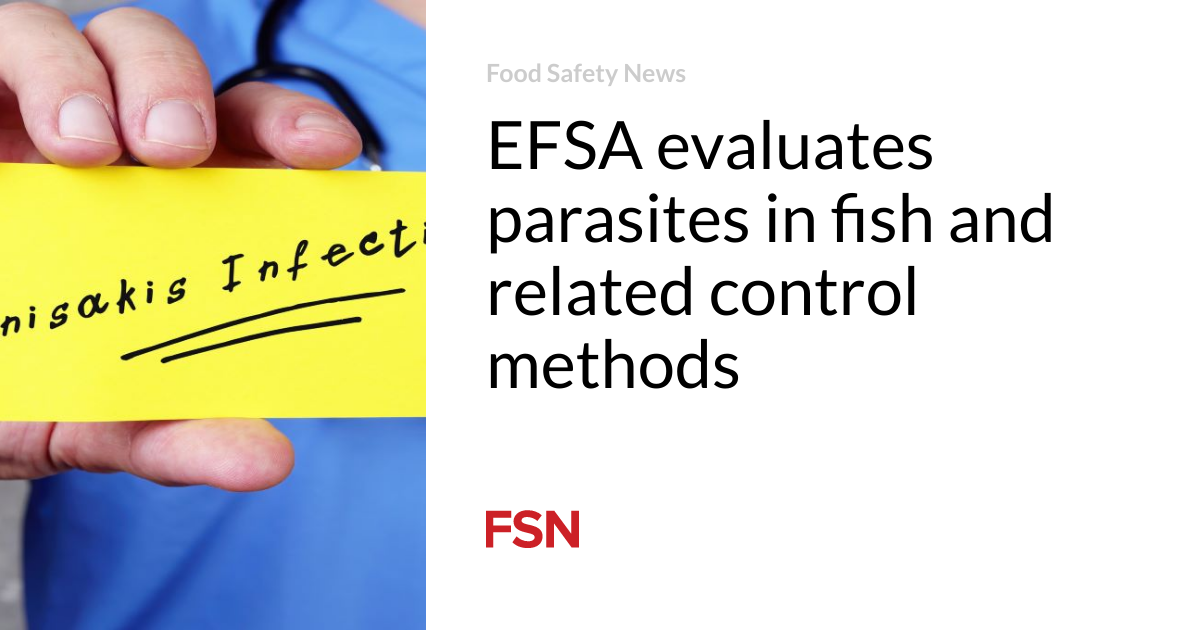Food
EFSA evaluates parasites in fish and related control methods

Scientists in Europe have updated knowledge about parasites in fish based on available surveillance data.
The scientific advice from the European Food Safety Authority (EFSA) also evaluated methods for detecting and killing parasites in fish.
European data shows that many types of farmed fish are free of parasites that can infect humans. These include Atlantic salmon, rainbow trout, gilthead bream, turbot, lean salmon, Atlantic halibut, carp and European catfish.
However, Anisakis pegreffii, Anisakis simplex and Cryptocotyle lingua were found in European sea bass, Atlantic bluefin tuna and/or cod, and Pseudamphistomum truncatum and Paracoenogonimus ovatus in tench produced in open offshore cages or flow-through ponds or tanks.
Situation in Europe
From 2010 to 2022, eleven foodborne outbreaks caused by Anisakis occurred in the EU. In 2020, there were two outbreaks, both reported by Spain, involving six people.
From 2010 to 2023, there were 544 reports of contaminated fishery products by 21 EU Member States to the Rapid Alert System for Food and Feed (RASFF). Italy had the most with 274 reports. The origin of the products mainly included Spain, Morocco and France. Anisakis was the parasite mentioned in the most reports.
Experts said so was almost certain that fish produced in closed recirculating aquaculture systems or flow-through facilities with filtered water intake and only heat-treated feed are free from parasites.
The offshore location of salmon farms can result in increased exposure of the fish to anisakids as they are close to marine mammal migration routes and habitats. Aquaculture that relies on the capture of young wild fish for subsequent captive breeding and fattening, as used for Atlantic bluefin tuna in Europe, also potentially facilitates fish exposure to parasites.
Scientists say more data are needed to estimate the prevalence of parasites in selected fish species, farming systems and production areas in Europe.
The European Commission had asked EFSA to update certain aspects of a 2010 scientific opinion on the risk assessment of parasites in fish products.
Currently, the relationship between the survival of the larvae, after a given treatment, and their capacity to infect humans is unclear, and as mentioned in the previous opinion, a precautionary principle is applied, meaning that all larvae should be dead, which gives a greater margin results. of safety.
Detect and kill parasites
Ecological causes of infection of fish with parasites include temperature, salinity, and oceanographic conditions; the fishing ground; length and size of the fish and the part of the fish that is infected. Climate change can have consequences due to rising water temperatures. People are also more likely to consume raw or undercooked foods.
Freezing and heating remain the most efficient methods to kill parasites in fishery products. High pressure processing may be suitable for some products. Pulsed electric field is a promising technology, although further development is needed, but ultrasound treatments were not effective.
For freezing, this is a core temperature of −15 degrees C (5 degrees F) for at least 96 hours, −20 degrees C (-4 degrees F) for at least 24 hours or −35 degrees C (-31 degrees F) for at least 15 o’clock. Heat treatment is a minimum of 60 degrees C (140 degrees F) for 1 minute.
Traditional dry salting processes of anchovy inactivated anisakis. Studies of other traditional processes, such as air drying and double salting, also suggest that anisakides are inactivated.
Advanced cutting processing techniques, including stripping and trimming, can have a significant impact on ensuring parasite-free products for consumers.
Scientists say further work should focus on detection and inactivation methods. They also said that a study should be conducted at the processing stage to address data gaps on the occurrence of zoonotic parasites in fish species commonly produced in open systems.
Experts are also investigating whether wild fish species from specific fishing areas pose a risk to public health due to zoonotic parasites.
(To sign up for a free subscription to Food Safety News, click here.)













